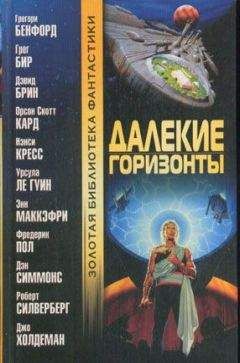Clark, A. (2003). Natural-born cyborgs: minds, technologies, and the future of human intelligence.
Oxford, England: Oxford University Press.
Cohen, G. (1990). Why Is It Difficult to Put Names to Faces? British Journal of Psychology, 81, 287-297.
Coleman, J. (1992). Ancient and medieval memories: studies in the reconstruction of the past.
Cambridge, England: Cambridge University Press.
Cooke, E. (2008). Remember, remember. London: Viking.
Corkin, S. (2002). What’s New with the Amnesic Patient H.M. Nature Reviews Neuroscience, 3,153-160.
Corsi, P. (1991). The enchanted loom: chapters in the history of neuroscience. New York: Oxford University Press.
Cott, J. (2005). On the sea of memory: a journey from forgetting to remembering. New York: Random House.
Darnton, R. (1990). First Steps Toward a History of Reading. In The kiss of Lamourette: reflections in cultural history. New York: W. W. Norton.
Doyle, B. (2000, March). The Joy of Sexing. The Atlantic Monthly, 28-31.
Draaisma, D. (2000). Metaphors of memory: a history of ideas about the mind. Cambridge, England: Cambridge University Press.
Draaisma, D. (2004). Why life speeds up as you get older: how memory shapes our past. Cambridge, England: Cambridge University Press.
Dudai, Y. (1997). How Big Is Human Memory, or on Being Just Useful Enough. Learning & Memory, 3, 341-365.
Dudai, Y. (2002). Memory from A to Z: keywords, concepts, and beyond. Oxford, England.: Oxford University Press.
Dudai, Y., & Carruthers, M. (2005). The Janus Face of Mnemosyne. Nature, 434, 567.
Dvorak, A. (1936). Typewriting behavior: psychology applied to teaching and learning typewriting. New York: American Book Company.
Ericsson, K. (2003). Exceptional Memorizers: Made, Not Born. Trends in Cognitive Science, 7 (6), 233-235.
Ericsson, K. (2004). Deliberate Practice and the Acquisition and Maintenance of Expert Performance in Medicine and Related Domains. Academic Medicine, 79 (10), 870-881.
Ericsson, K., 8c Chase, W. G. (1982). Exceptional Memory. American Scientist, 70 (Nov-Dee), 607-615.
Ericsson, K., & Kintsch, W. (1995). Long-Term Working Memory. Psychological Review102 (2), 211-245.
Ericsson, K. A. (1996). The road to excellence: the acquisition of expert performance in the arts and sciences, sports, and games. Mahwah, N. J.: Lawrence Erlbaum Associates.
Ericsson, K. A. (2006). The Cambridge handbook of expertise and expert performance. Cambridge, England: Cambridge University Press.
Ericsson, K., Delaney, P. F., Weaver, G., & Mahadevan, R. (2004). Uncovering the Structure of a Memorist’s Superior “Basic” Memory Capacity. Cognitive Psychology, 49,191-237.
Ericsson, K., Krampe, R. Т., & Tesch-Romer, C. (1993). The Role of Deliberate Practice in the Acquisition of Expert Performance. Psychological Review 100 (3), 363^406.
Farrand, P., Hussein, F., & Hennessy, E. (2002). The Efficacy of the ‘Mind Map’ Study Technique. Medical Education, 36 (5), 426-431.
Fellows, G. S., 8c Larrowe, M. D. (1888). “Loisette”exposed (Marcus DwightLarrowe, alias Silas Holmes, alias Alphonse Loisette). New York: G.S. Fellows.
Fischer, S. R. (2001). A history of writing. London: Reaktion.
Schacter, D. L. (2001). The seven sins of memory: how the mind forgets and remembers, Boston: Houghton Mifflin.
Schacter, D. L., & Scarry, E. (2000). Memory, brain, and belief. Cambridge, Mass.; London: Harvard University Press.
Shakuntala, D. (1977). Figuring; the joy of numbers. New York: Harper & Row.
Shenk, D. (2001). The forgetting: Alzheimer's, portrait of an epidemic. New York: Doubleday.
Small, G. W„ & Vorgan, G. (2006). The longevity bible: 8 essentia/ strategies for keeping your mind sharp and your body young. New York: Hyperion.
Small, J. P. (2005). Wax tablets of the mind: cognitive studies of memory and literacy in classical antiquity. London: Routledge.
Smith, S. B. (1983). The great mental calculators: the psychology, methods, and lives of calculating prodigies, past and present. New York: Columbia University Press.
Snowdon, D. (2001). Aging with grace: what the nun study teaches us about leading longer, healthier, and more meaningful lives. New York: Bantam.
Spence, J. D. (1984). The memory palace of Matteo Ricci. New York: Viking Penguin.
Spillich, G. J. (1979). Text Processing of Domain-Related Information for Individuals with High and Low Domain Knowledge. Journal of Verbal Learning and Verbal Behavior, 14, 506-522.
Squire, L. R. (1987). Memory and brain. New York: Oxford University Press.
Squire, L. R. (1992). Encyclopedia of learning and memory. New York: Macmillan.
Squire, L. R., & Kandel, E. R. (1999). Memory: from mind to molecules. New York: Scientific American Library.
Standing, L. (1973), Learning 10,000 Pictures, Quarterly Journal of Experimental Psychology,
25, 207-222.
Starkes, J. L., & Ericsson, K. A. (2003). Expert performance in sports: advances in research on sport expertise. Champaign, IL: Human Kinetics.
Stefanacci, L., Buffalo, E. A., Schmolck, H., & Squire, L. (2000). Profound Amnesia After Damage to the Medial Temporal Lobe: A Neuroanatomical and Neuropsychological Profile of Patient E. P. Journal of Neuroscience, 20 (18), 7024-7036.
Stratton, G. M. (1917). The Mnemonic Feat of the “Shass Poliak” Psychological Review, 24, 244-247.
Gandz, S. (1935). The Robeh or the official memortzer of the Palestinian schools.
Proceedings of the American Academy for Jewish Research, 7,5-12.
Havelock, E. A. (1963). Preface to Plato. Cambridge, Mass.: Belknap Press, Harvard University Press.
Havelock, E. A. (1986). The muse learns to write: reflections on orality and literacy from antiquity to the present. New Haven: Yale University Press.
Hermelin, B. (2001). Bright splinters of the mind: a personal story of research with autistic savants. London: J. Kingsley
Herrmann, D. J. (1992). Memory improvement: implications for memory theory. New York: Springer-Verlag.
Hess, F. M. (2008). Still at risk: what students don’t know, even now. Common Core. Hilts, P. J. (1996). Memory's ghost: the nature of memory and the strange tale of Mr. M. New York: Simon & Schuster.
Horsey, R. (2002), The art of chicken sexing. Cogprints.
Howe, M. J., & Smith, J. (1988). Calendar Calculating in 'Idiot Savants’: How Do They Do It? British Journal of Psychology, 79, 371-386.
Illich, I. (1993). In the vineyard of the text: a commentary to Hugh’s Didascalicon. Chicago: University of Chicago Press.
Jaeggi, S. М., Buschkuehl, М., Jonides, J., & Perrig, W. J. (2008). Improving Fluid Intelligence with Training on Working Memory. PNAS, 105 (19), 6829-6833.
Johnson, G. (1992). In the palaces of memory: how we build the worlds inside our heads. New York: Vintage Books.
Kandel, E. R. (2006). In search of memory: the emergence of a new science of mind. New York: W.W. Norton.
Khalfa, J. (1994). What is intelligence? Cambridge, England: Cambridge University Press.
Kliebard, H. M. (2002). Changing course: American curriculum reform in the 20th century. New York: Teachers College Press.
Kondo, Y,, Suzuki, М., Mugikura, S., Abe, N., Takahashi, S., Iijima, Т., & Fujii, T. (2005). Changes in Brain Activation Associated with Use of a Memory Strategy: A Functional MRI Study. Neuroimage, 24,1154-1163.
LeDoux, J. E. (2002). Synaptic self: how our brains become who we are. New York: Viking.
Loftus, Е. F., & Loftus, G. R. (1980). On the Permanence of Stored Information in the Human Brain. American Psychologist, 35(5), 409-420.
Loisette, A., & North, M. J. (1899). Assimilative memory or how to attend and neverforget. New York: Funk & Wagnalls.
Lorayne, H„ & Lucas, J, (1974). The memory book. New York: Stein and Day.
Lord, A. B. (1960). The singer of tales. Cambridge, Mass.: Harvard University Press.
Lyndon, D., & Moore, C. W. (1994). Chambers for я memory palace. Cambridge, Mass.: MIT Press.
Maguire, E. A., Gadian. D. G., Johnsrude, I. S., Good, C. D., Ashburner, J., Frackowiak, R. S., & Frith, C. D. (2000). Navigation-Related Structural Change in the Hippocampi of Taxi Drivers. PNAS, 97,84 398-84 403.
Maguire, E. A., Valentine, E. R,, Wilding, J, М., & Kapur, N. (2003). Routes to Remembering: The Brains Behind Superior Memory. Nature Neuroscience, 6 (1), 90-95.
Man, J. (2002). Gutenberg: how one man remade the world with words. New York: John Wiley & Son s.
Manguel, A. (1996). A history of reading. New York: Viking,
Martin, R. D. (1994). The specialist chick sexer. Melbourne, Australia.: Bernal Publishing.
Masters of a dying art get together to sex. (2001, February 12). Wall Street Journal.
Matussek, P. (2001). The Renaissance of the Theater of Memory. Janus Paragrana 8, 66-70.
McGaugh, J. L. (2003). Memory and emotion: the making of lasting memories. New York: Columbia University Press.
Merritt, J. O. (1979). None in a Million: Results of Mass Screening for Eidetic Ability. Behavioral and Brain Sciences, 2, 612.
Miller, G. A. (1956). The Magical Number Seven, Plus or Minus TVro: Some Limits on our Capacity for Processing Information. Psychological Review, 63,81-97-
Mithen, S. J. (1996). The prehistory of the mind: a search for the origins of art, religion, and science. London: Thames and Hudson.
Noice, H. (1992). Elaborative Memory Strategies of Professional Actors. Applied Cognitive Psychology, 6,417-427.
Nyberg, L., Sandblom, J., Jones, S., Neely, A. S., Petersson, К. М., lngvar, М., St Backman, L. (2003). Neural Correlates of Training-Related Memory Improve- ment in Adulthood and Aging. PNAS, 100 (23), 13728-13733.
Obier, L. К,, & Fein, D. (1988). The exceptional brain: neuropsychology of talent and special abilities. New York: Guilford Press.
O’Brien, D. (2000). Learn to remember: practical techniques and exercises to improve your memory. San Francisco: Chronicle Books.
Ong, W. j. (1982). Orality and literaiy: the technologmng of the world. London: Methuen.
Osborne, L. (2003, June 22). Savant for a Day. New York Times.
Peek, F., & Anderson, S. W. (1996). The real rain man, Kim Peek. Salt Lake City, Utah: Harkness Publishing Consultants.
Petroski, H. (1999). The book on the bookshelf. New York: Alfred A. Knopf.
Phelps, P. (n.d.). Gender Identification of Chicks Prior to Hatch. Poultryscience.org e-Digest, 2 (1).
Radcliff-Ulmstead, D. (1972). Giulio Camfflo’s Emblems of Memory. Yale French Studies, 47, 47-56.
Ramachandran, V. S., & Hubbard, E. M. (2001). Psychophsyical Investigations into the Neural Basis of Synaesthesia. Proc. R. Soc. London, 268,979-983.
Ramachandran, V. S., & Hubbard, E. M. (2003, May). Hearing Colors, Tasting Shapes. Scientific American, 53-59.
Ravennas, P. (1545), The art of memory, that otherwyse is called the PhenixA boke very behouefull andprofytable to all professours ofscyences. Grammaryens, rethoryciens dialectyke, legystes, phylosophres [and] theologiens.
Ravitch, D. (2001). Left back: a century of battles over school reform. New York: Simon & Schuster.
Rose, S. P. (2005). The future of the brain: the promise and perils of tomorrow’s neuroscience. Oxford, England: Oxford University Press.
Ross, P. E. (2006, August). The Expert Mind. Scientific American, 65-71.
Rossi, P. (2000). Logic and the art of memory: the quest for a universal language. Chicago: University of Chicago Press.
Rowland, I. D. (2008). Giordano Bruno: philosopher/heretic. New York: Farrar, Straus and Giroux.
Rubin, D. C. (1995). Memory in oral traditions: the cognitive psychology of epic, ballads, and counting-out rhymes. New York: Oxford University Press.
Schacter, D. L. (1996). Searching for memory: the brain, the mind, and the past. New York: Basic Books.
Stromeyer, С. F., & Psotka, J. (1970). The Detailed Texture of Eidetic Images. Nature, 225, 346-349.
Tamrnet, D. (2007). Born on a blue day: inside the extraordinary mind of an autistic savant: a memoir. New York: Free Press.
Tammet, D. (2009). Embracing the wide sky: a tour across the horizons of the mind. New York: Free Press.
Tanaka, S., Michimata, C., Kaminaga, Т., Honda, М., & Sadato, N. (2002). Superior Digit Memory of Abacus Experts. NeuroReport, 13 (17), 2187-2191.
Thompson, C. (2006, November). A Head for Detail. Fast Company, 73-112.
Thompson, C. P., Cowan, Т. М., & Frieman, J. (1993). Memory search byamemorist. Hillsdale, N. J.: L. Erlbaum Associates.
Treffert, D. A. (1990). Extraordinary people: understanding savant syndrome. New York: Ballantine.
Wagenaar, W. A. (1986). My Memory: A Study of Autobiographical Memory Over Six Years. Cognitive Psychology, 18, 225-252.





